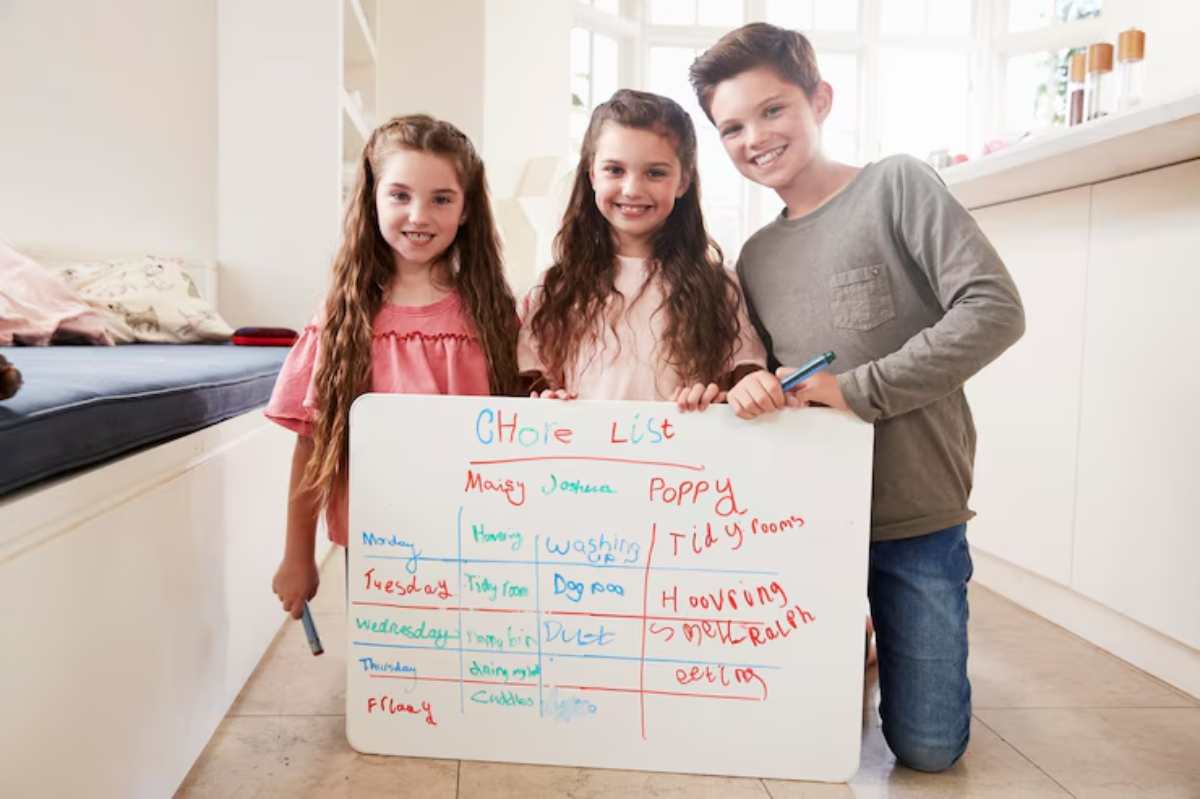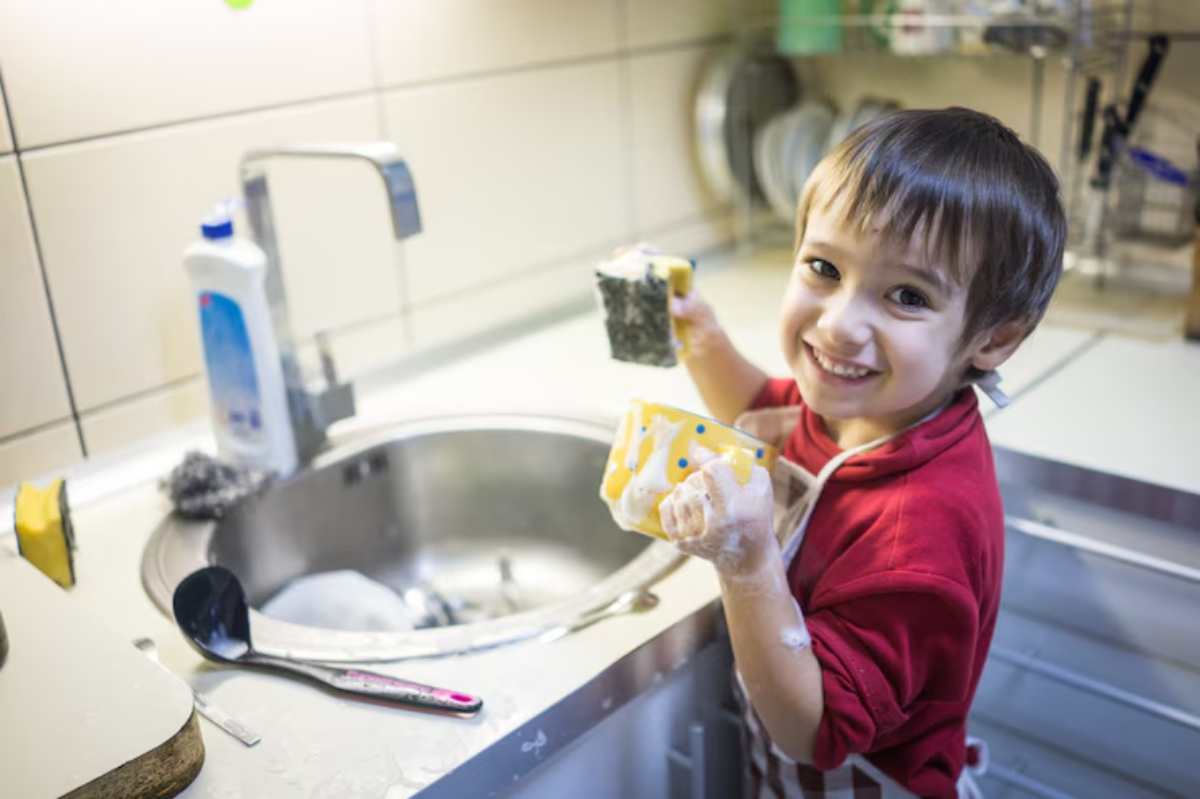
Creating an Age-Appropriate Chore Chart
Teaching children responsibility doesn’t happen overnight. One of the most practical ways to instil it from an early age is through consistent, age-appropriate chores. But knowing what tasks are suitable for a 5-year-old versus a 12-year-old can be a challenge.
An age-appropriate chore chart removes confusion. It also sets a clear path for growth. It turns daily tasks into valuable life lessons while easing the workload for parents. This blog breaks down the why, how, and what of chore charts, tailored to match your child’s developmental stage.
Why It Matters

Building Life Skills from an Early Age
Chores are more than just tasks; they’re foundational experiences that build a child’s sense of capability and belonging. Kids learn time management, accountability, and teamwork by doing daily chores at home.
Reinforcing Structure and Expectations
Kids thrive on routine. A chore chart adds predictability to the day and clarifies what’s expected of them. Over time, this reduces arguments, reminders, and power struggles around tasks.
Encouraging Independence
Assigning tasks suitable to a child’s age fosters independence. It shows them that they are capable of contributing in meaningful ways—an important step toward self-confidence.
Key Benefits
1. Promotes Responsibility and Accountability
When children complete tasks that they know are theirs to manage, it instils a strong sense of ownership. Whether it’s feeding a pet or putting laundry away, each task adds to their understanding of accountability.
2. Improves Family Dynamics
When everyone contributes to the household, no one feels like they’re doing everything alone. This creates a culture of teamwork and mutual respect, reducing stress and frustration among family members.
3. Encourages Skill Development
Chores help build important life skills. For young kids, they boost motor skills. For older kids, chores improve problem-solving and organisation.
4. Teaches Time and Task Management
Kids begin to learn how to manage their own time when tasks are paired with expectations. A visual chart can help them understand deadlines, routines, and planning.
Additional Expert Tips & Common Mistakes to Avoid
Expert Tips for Making Chore Charts Effective
Start Simple and Build Gradually
Especially with younger kids, don’t overwhelm them with too many tasks. Begin with one or two consistent responsibilities and gradually add more as they master them.
Make It Visual
Younger children especially benefit from visual cues. Use pictures, colour-coded tasks, or stickers to represent completed chores. This not only makes the chart fun but also reinforces memory through visual association.
Keep It Consistent
A chart is only effective when it’s used regularly. Set a routine time each day—morning or evening—for reviewing and updating the chart. This builds habit and keeps kids engaged.
Offer Age-Appropriate Rewards
Positive reinforcement can keep motivation high. Instead of material rewards, consider privileges like extra story time, choosing dinner, or a weekend outing.
Get Kids Involved in the Planning
When children help create their own chart, they’re more likely to take ownership. Let them choose sticker designs or help assign tasks they feel confident doing.
Common Mistakes to Avoid
- Setting unrealistic expectations: Avoid assigning tasks that are too advanced or time-consuming for a child’s age.
- Not adjusting as kids grow: What works for a 6-year-old will be boring or irrelevant by the time they’re 10. Update chore charts every few months to keep them developmentally appropriate.
- Neglecting to follow through: If you don’t check or acknowledge completed tasks, the system quickly loses meaning.
- Chores as family help: They should be seen as a contribution, not a punishment for bad behaviour.
Advanced Insights and Expert Recommendations

Age-by-Age Guide to Chore Assignments
Ages 2–3: Start with Basic Participation
Children at this age are naturally eager to mimic adults. Use that curiosity to build early habits. Chores can include:
- Putting toys in a bin
- Wiping spills with a cloth
- Helping sort laundry by colour
Ages 4–6: Build Routine and Repetition
Children begin understanding cause and effect and can follow basic sequences. Chores can include:
- Making their bed with help
- Watering plants
- Feeding pets with supervision
Ages 7–9: Increase Responsibility
At this age, children can handle multi-step tasks and follow more structured routines. Chores can include:
- Vacuuming or sweeping
- Setting and clearing the table
- Packing their school bag
Ages 10–12: Promote Independence
Preteens are capable of managing more complex and time-sensitive responsibilities. Chores can include:

- Doing laundry
- Preparing simple meals
- Taking out the trash regularly
Ages 13+: Prep for Real-World Readiness
Teens should be preparing for adult responsibilities. Use chores to strengthen independence. Chores can include:
- Grocery shopping with a list
- Managing a personal budget for household tasks
- Mowing the lawn or more advanced home maintenance
Using Chore Charts to Support Emotional Growth
A well-managed chore system doesn’t just teach responsibility—it helps kids feel valued. Make space for conversations around effort, improvement, and setbacks. Validate your child’s contributions by noticing them out loud:
- “I saw how carefully you folded the towels—thank you.”
- “You remembered to feed the dog without being asked. That shows maturity.”
These small acknowledgements boost intrinsic motivation far more than checkmarks ever could.
A Chart That Grows with Your Child
Creating an age-appropriate chore chart is less about the tasks and more about the transformation. It’s a pathway to raising children who feel confident in their capabilities and committed to contributing.
As your children grow, the chart should evolve with them, reflecting new abilities, interests, and areas of growth. Keep the tone positive, the expectations clear, and the structure flexible enough to meet your family’s changing needs.
In the end, a chore chart is more than just a to-do list. It’s a quiet teacher. It builds responsibility and reminds us that everyone, no matter how small, helps keep a home running smoothly.


